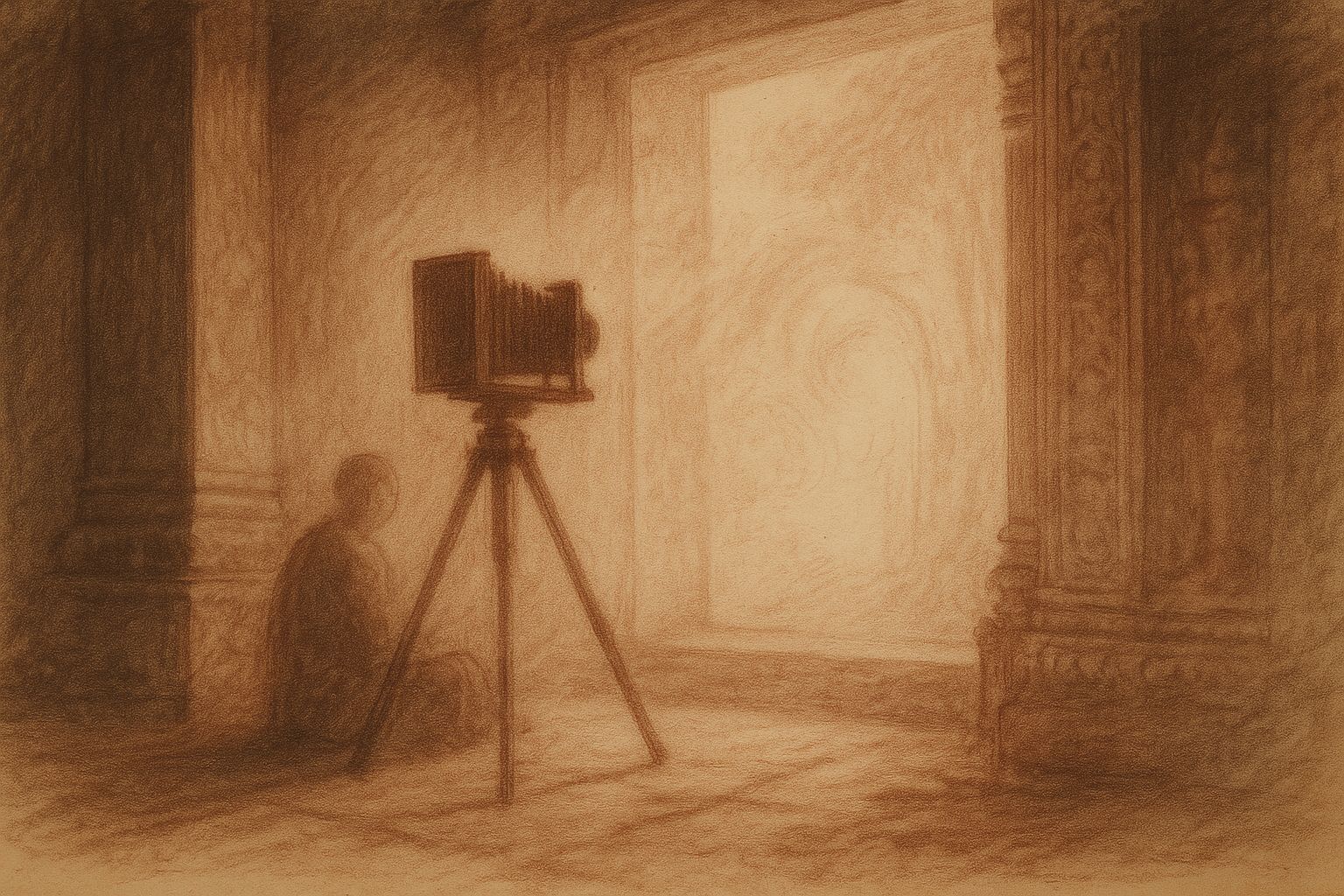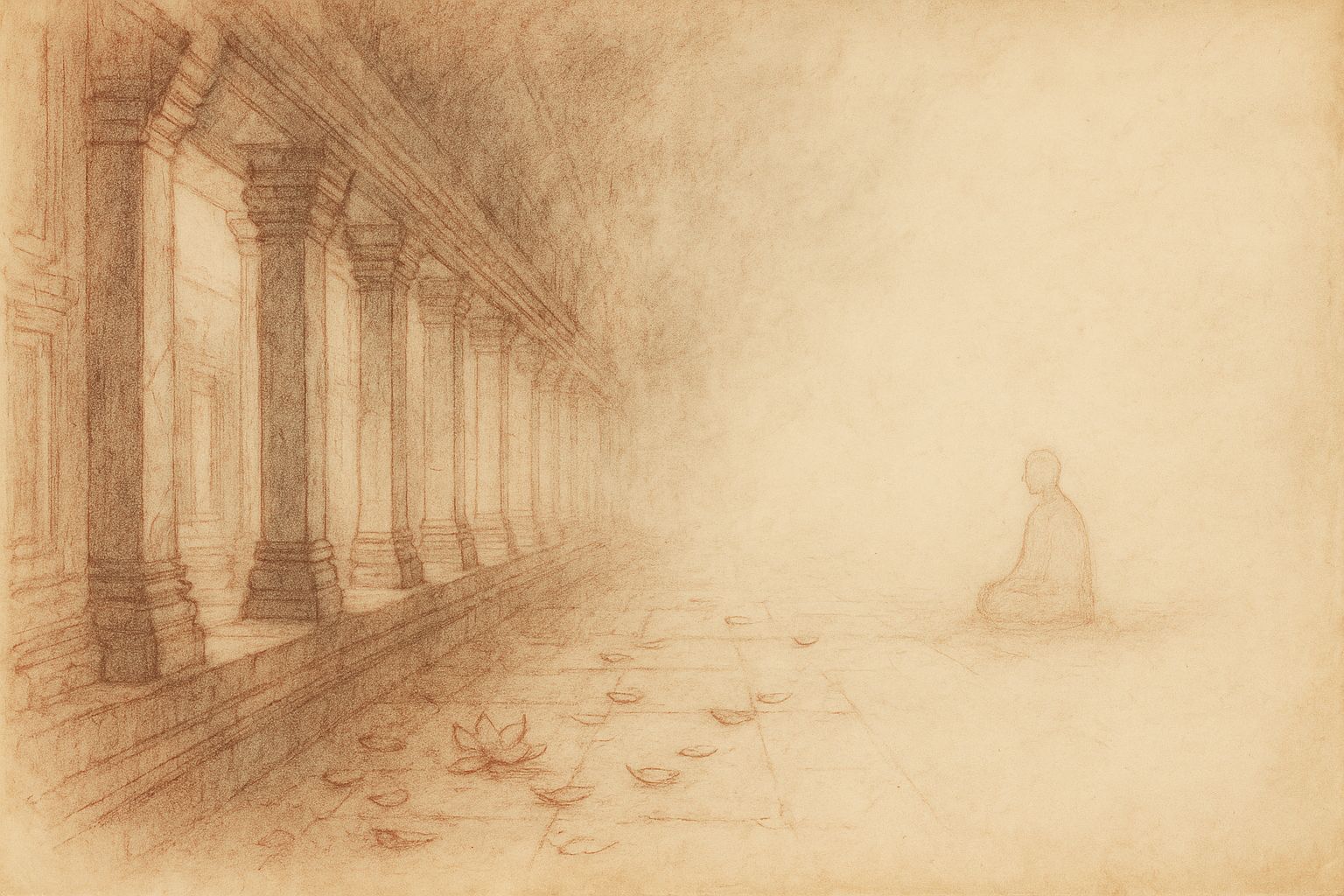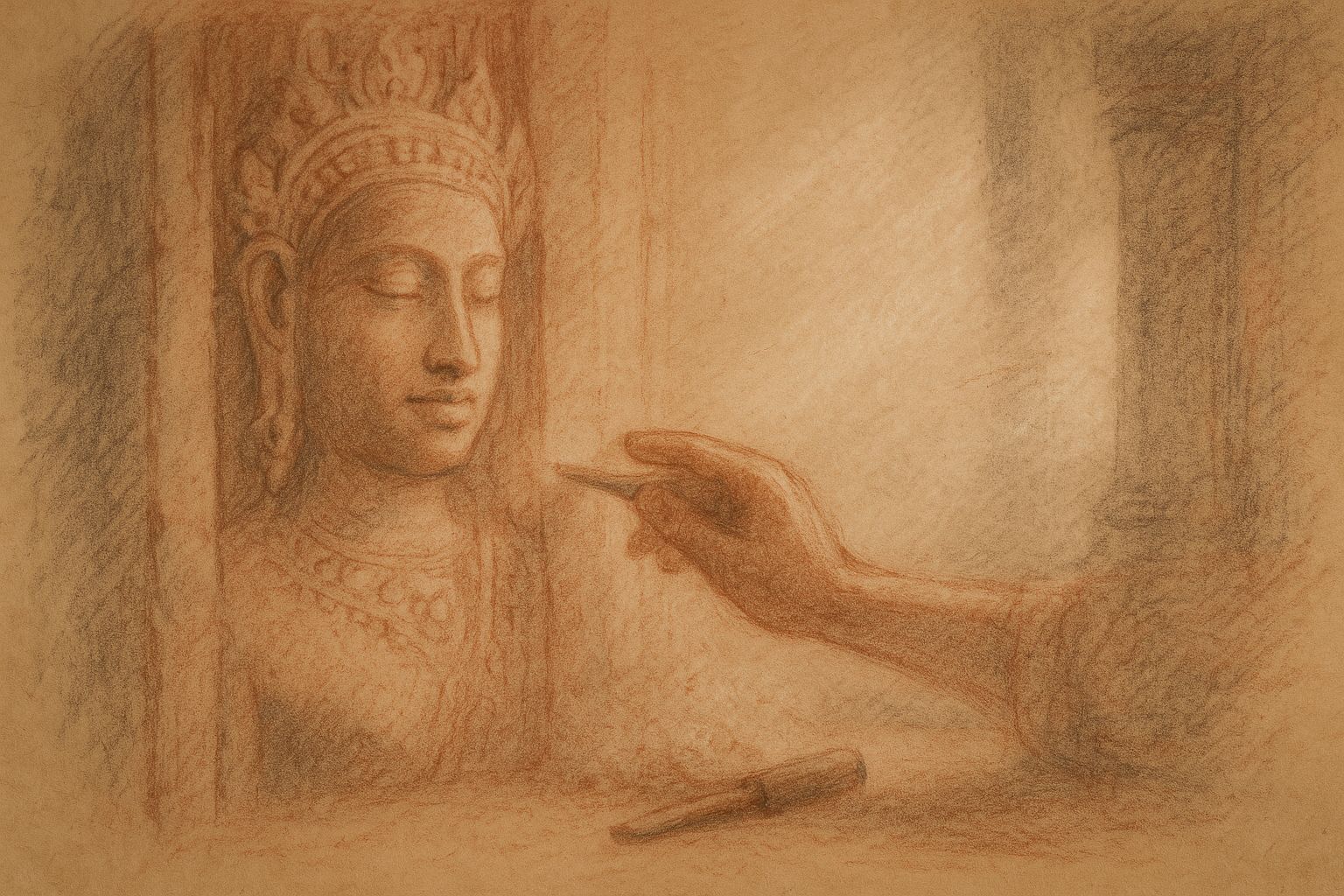Complimentary worldwide shipping on orders over $400 · No import tariffs for most countries
Complimentary worldwide shipping on orders over $400 · No import tariffs for most countries

You say Apsara, I say Devata!
2 min read
Since writing this article, I have changed my mind! I now use the term apsara. My reasoning is described in my new article What the Celestial Ladies Are Called.
The many beautiful ladies adorning the walls of the Angkor temples are almost universally referred to as apsaras.
The name 'apsara' has certainly caught the imagination of writers, tour guides, documentary producers and hotel owners alike. The name and their lovely images can be found throughout Angkor and in Siem Reap's guide books, hotels and guest houses, restaurants, gift shops and other businesses.
The name is further reinforced in visitors' minds because the Cambodian management authority responsible for protecting the Angkor Archaeological Park is called APSARA.
Furthermore, the Apsara Dancers that can be seen performing in modern-day Cambodia look more like what experts traditionally referred to as devatas in academic texts discussing Angkor imagery.
I prefer to stick with the classical (perhaps old-fashioned) distinction between the apsaras, the celestial nymphs born from the Churning of the Ocean of Milk, and the devatas, semi-divine beings who guard the sanctuaries devoted to goddesses, such those as at Preah Ko Temple and Lolei Temple. This distinction is not only more classically correct, it also helps me to identify and understand the ancient carvings on the walls of Angkor.
So, at Angkor, apsaras are always seen flying in the air or dancing in Indra's heavens with smiles illuminating their faces.
Devatas are the ladies that are standing, usually holding a lotus flower. They sometimes smile, though it is usually more enigmatic, more sensual, and many of them have a haughty expression.
Both apsaras and devatas can be found in their thousands at Angkor Wat Temple and at all of the many temples built under Jayavarman VII.
So, for example, I refer to the standing ladies seen throughout Angkor Wat Temple as devatas. The ladies represented as dancing, also present throughout Angkor Wat Temple, are apsaras.
If you enjoyed this article, and you would like to continue to share in my adventures, please sign up for my newsletter below. Since I no longer post on social media, this is the best way to stay up-to-date with my work.
Also in Library

The Weight of Light
3 min read
In the hush before dawn, light gathers until waiting becomes prayer.
Long exposure teaches surrender — to breathe with time, to let the unseen complete the image.
What remains on film is not possession, but trust made visible.

The Silence Between Temples
3 min read
Between one breath and the next, the world holds its pulse in silence.
Here, between temples, devotion hums without voice—light becoming memory, memory becoming air.
Step softly into the space where sound has already bowed,
and feel the sacred linger in what remains unspoken.

Hands of the Sculptor — The Craft as Meditation
1 min read
In the hush of the galleries, the sculptor listens rather than strikes.
Each breath, each measured blow, opens silence a little further.
Unfinished reliefs reveal the moment when mastery becomes meditation—
when patience itself is carved into being,
and the dust that falls at a mason’s feet becomes the residue of prayer.
Join My Studio Journal
Receive occasional letters from my studio in Siem Reap—offering a glimpse into my creative process, early access to new fine art prints, field notes from the temples of Angkor, exhibition announcements, and reflections on beauty, impermanence, and the spirit of place.
No noise. No clutter. Just quiet inspiration, delivered gently.
Subscribe and stay connected to the unfolding story.

Join My Studio Journal
Receive occasional letters from my studio in Siem Reap—offering a glimpse into my creative process, early access to new fine art prints, field notes from the temples of Angkor, exhibition announcements, and reflections on beauty, impermanence, and the spirit of place.
No noise. No clutter. Just quiet inspiration, delivered gently.
Subscribe and stay connected to the unfolding story.
